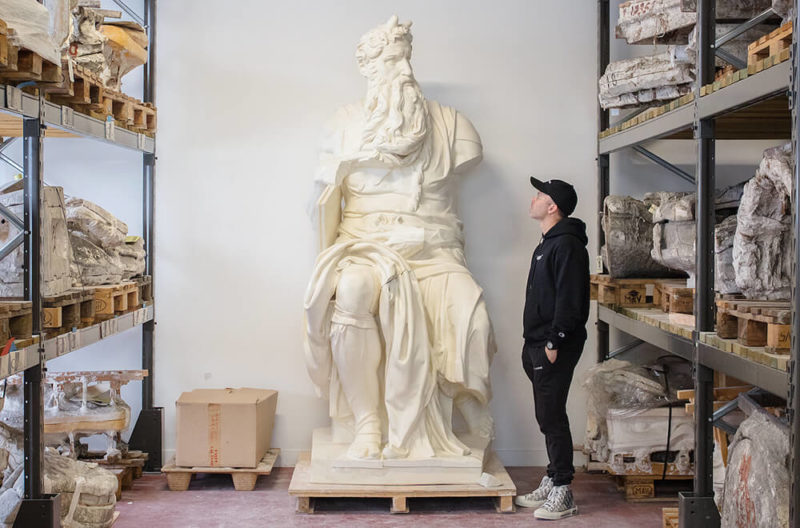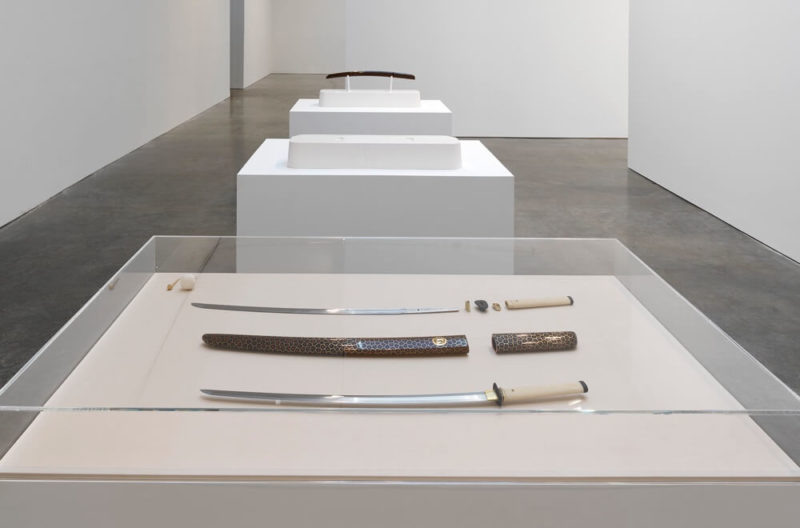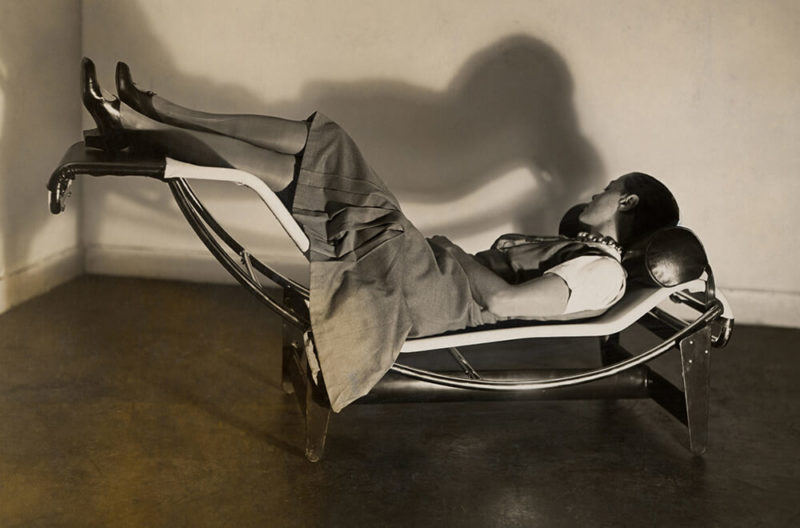Cars: Accelerating the Modern World
A paean to cars - collectible design on wheels - and their ambiguous legacy.
V&A, London
23rd November 2019 – 19th April 2020
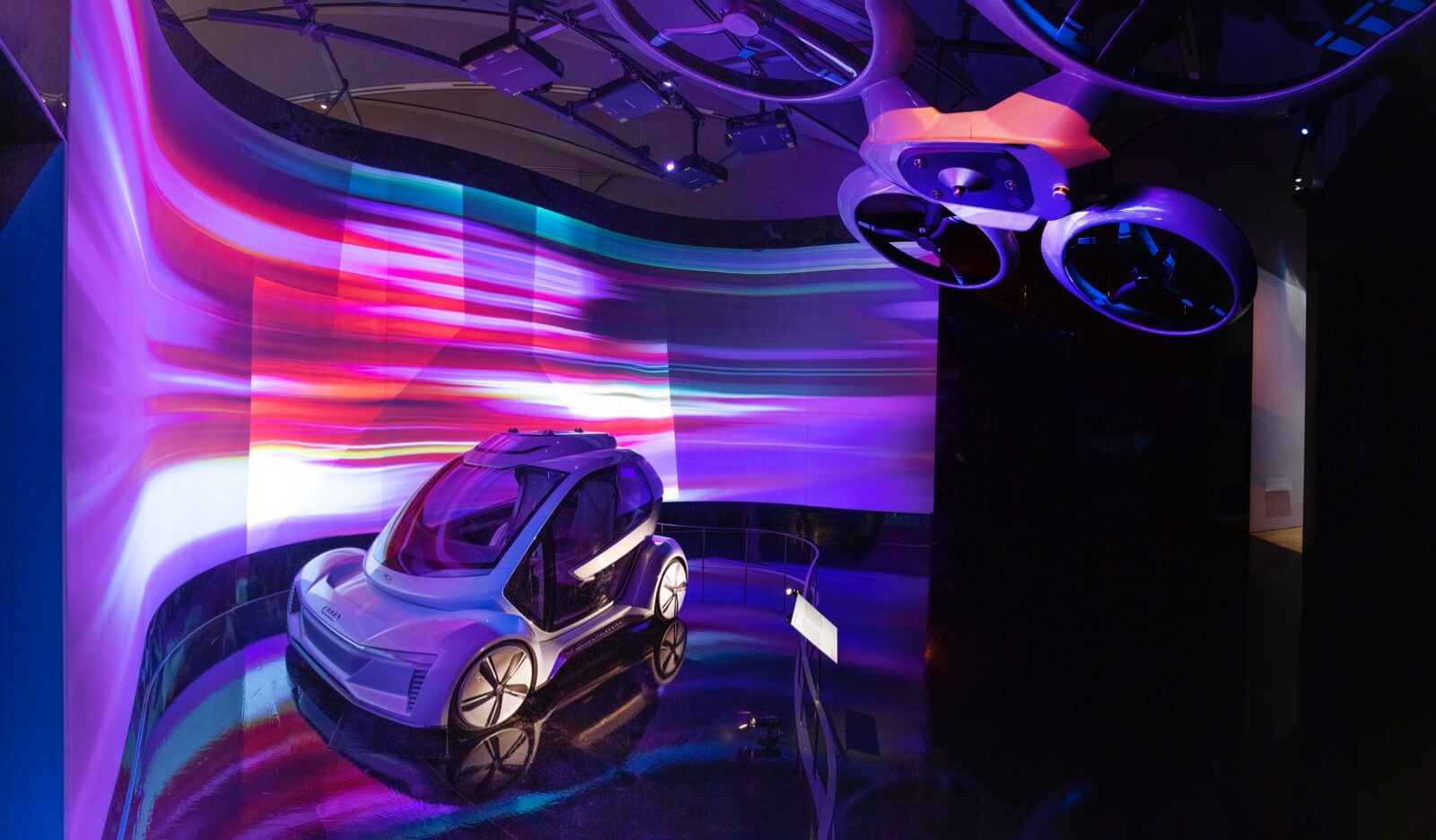
Installation view
COURTESY: V&A
LIKE MANY PEOPLE, I suspect, I have a complex relationship with the car. I know they’re noisy, polluting and downright dangerous. They clog up the arteries of our cities and they’re helping to kill the planet. In total I’ve lost five friends in four separate road accidents, each one a shocking waste of a young life. And yet there is still something utterly magical about applying your foot to the accelerator, hearing the engine rumble and the feeling of velocity pinning you back in your seat.
Until he retired my father was a voluntary road accident emergency doctor, who would often arrive first on the scene of a smash (occasionally with yours truly inadvertently along for the ride). As much as anyone he knew the inherent danger of driving and yet that didn’t prevent him taking up motor racing in his dotage. Like many men of his ilk he has absolutely no interest in art, furniture or interiors, yet he is absolutely fascinated by car design. We still occasionally go on bonding weekends to the Le Mans 24 Hour race – the nearest motoring gets to the Glastonbury Festival – and the place is teeming with blokes (by and large it is gender specific) just like him. They are a distinct tribe of connoisseurs, who understand that cars are perfectly placed at the nexus of engineering, technology, marketing, branding, and, crucially, design. It’s why they remain a source of fascination.
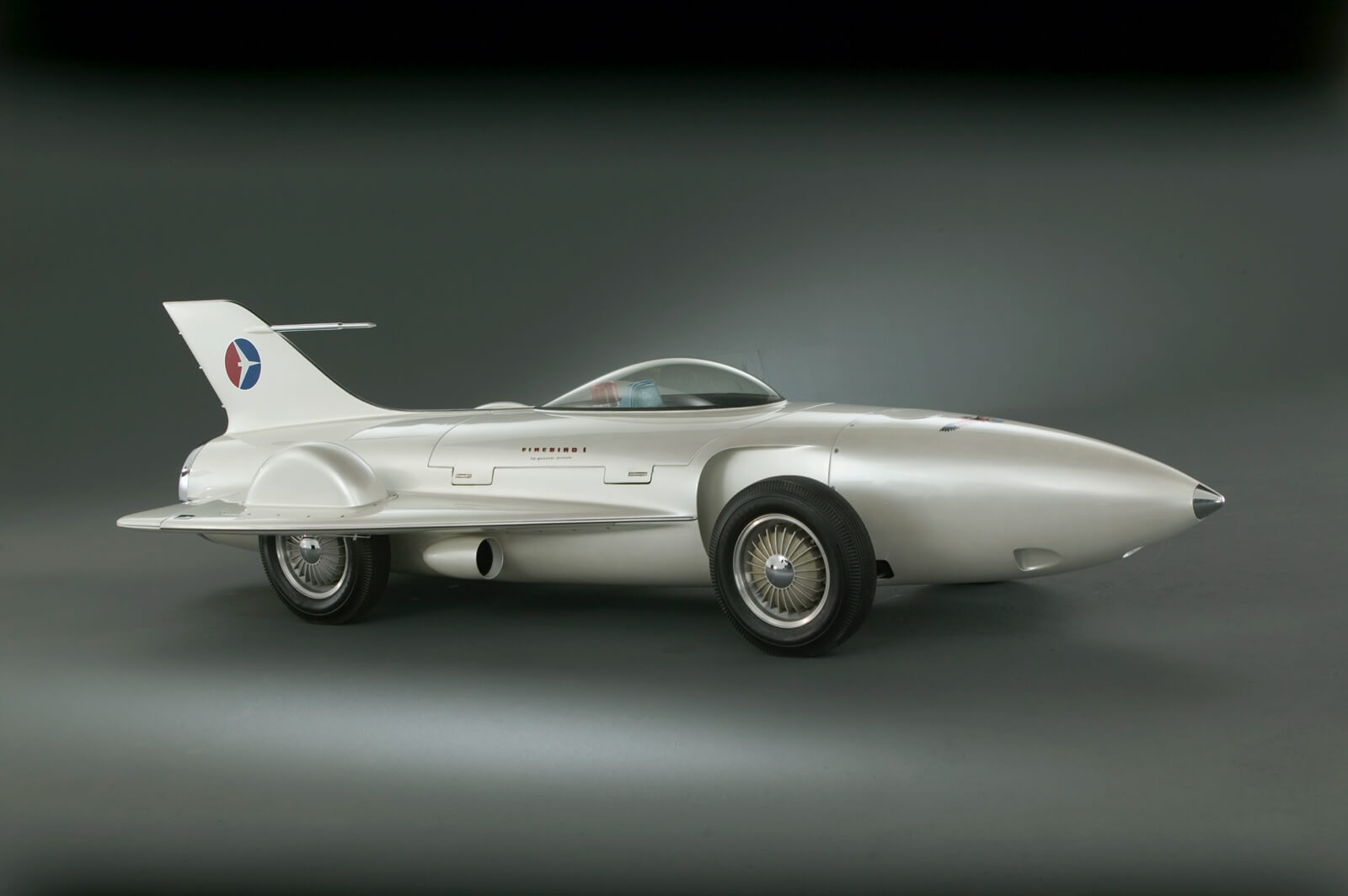
General Motors Firebird I (XP-21), 1953
COURTESY: V&A / © General Motors Company, LLC
Interestingly, I don’t think the V&A’s latest exhibition, Cars: Accelerating the Modern World, is aimed directly at petrol heads or classic car collectors. Perhaps the tone is set by the first exhibit visitors see – at the top of the stairs and technically before they get into the show properly. The E-Type Jaguar was created in 1961 and remains – in my opinion and possibly more importantly that of Enzo Ferrari – one of the most beautiful objects ever designed. However, this particular model is a little bit different because it has been converted to run on an electric, emission-free engine. Immediately you know this isn’t simply going to be a paean to the combustion engine.

Installation view
COURTESY: V&A
That said, and naturally enough, there are some beautiful models on display. The Patent-Motorwagen No 3, for example, created by Karl Benz in 1886 was the first production automobile ever made and remains a thing of wonder.
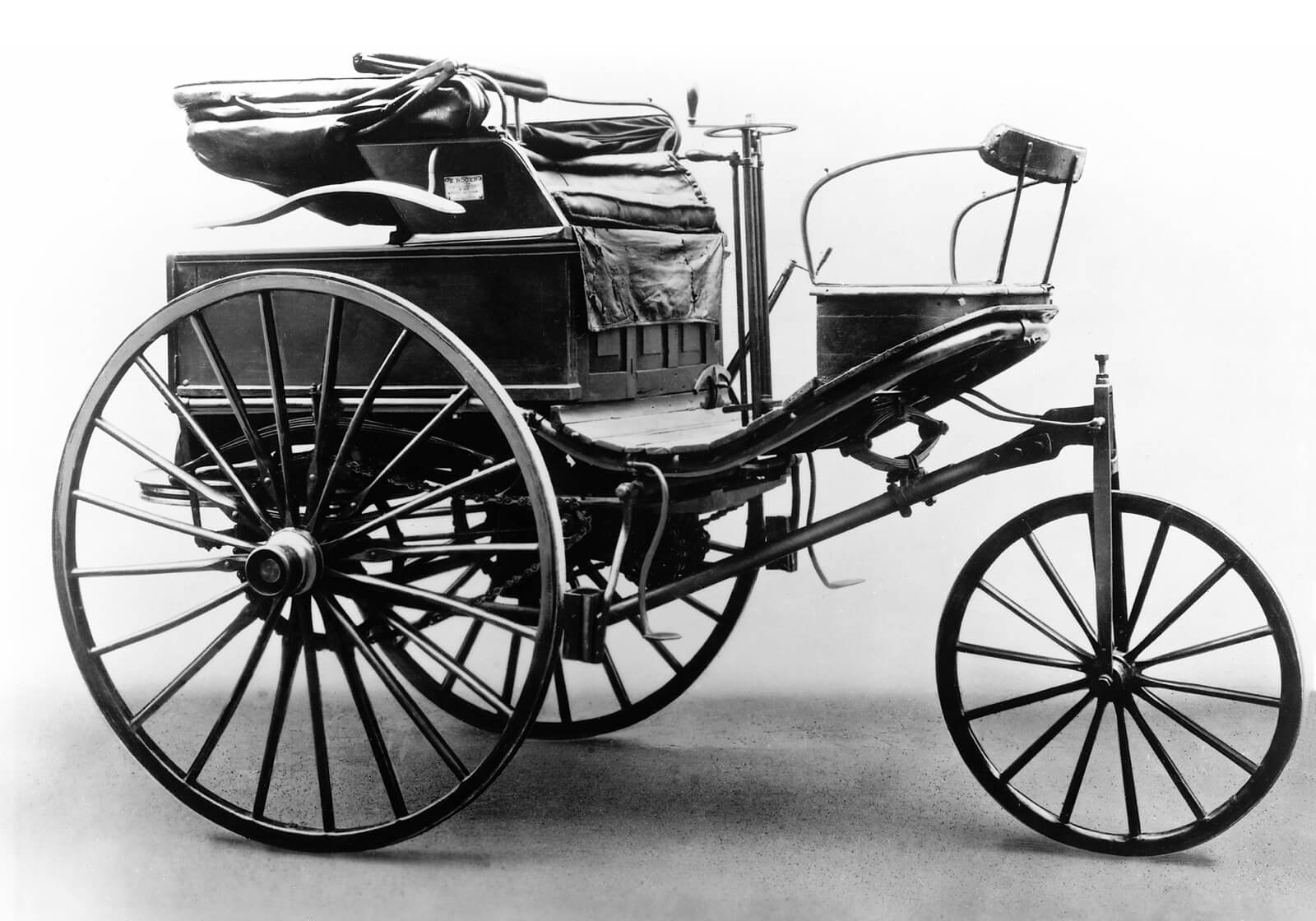
Photo of the Benz patent motor car, model no. 3, 1888
COURTESY: V&A / Daimler
Meanwhile the teardrop-like Tatra T77, designed by Hans Ledwinka and Paul Jaray, introduced the notion of streamlining to the mainstream in 1934, while the Ford Mustang Fastback was a muscle car that brought speed (and as the information panel points out, increased fatalities) to the masses.
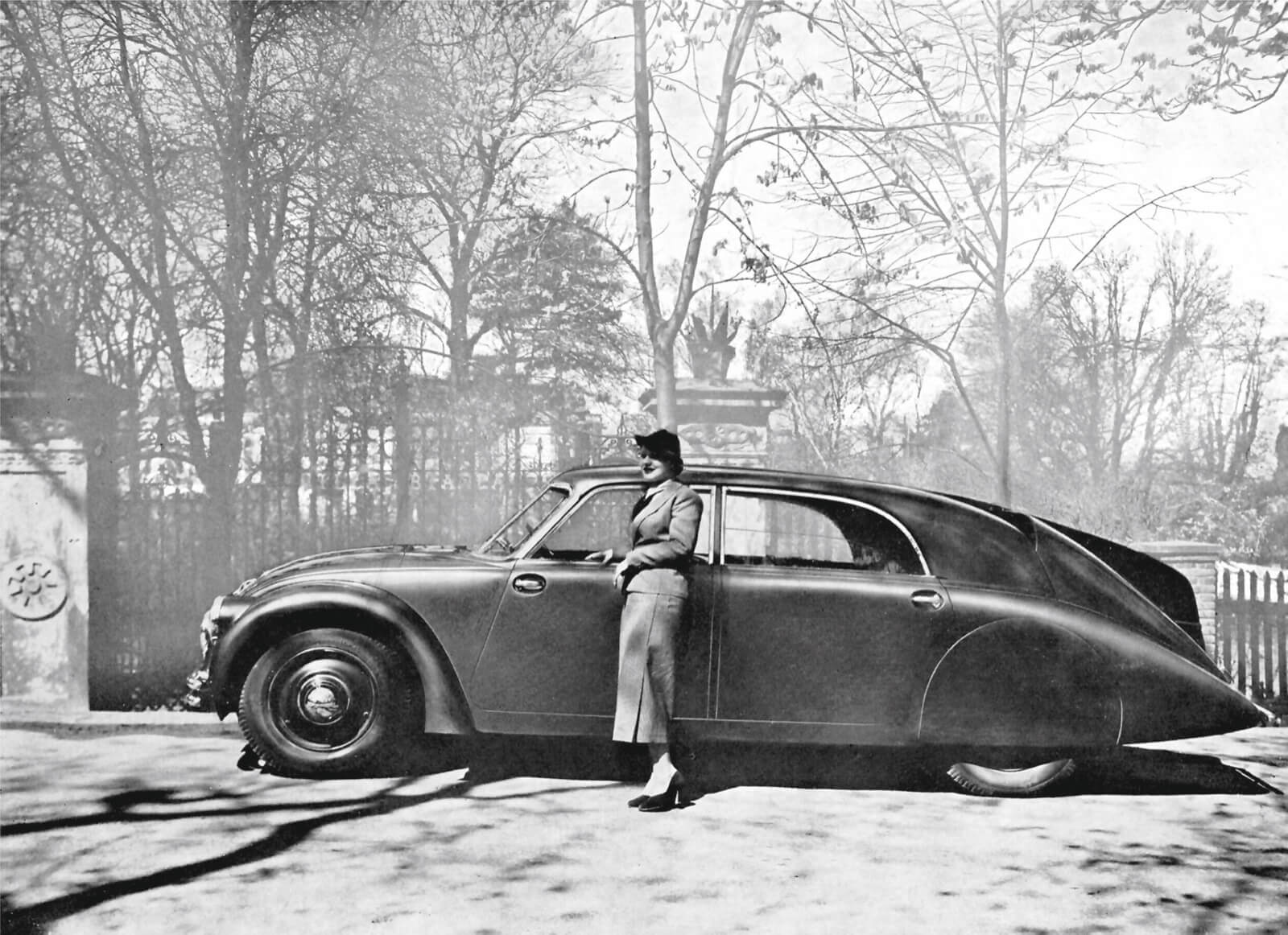
French advertisement (1934) for the Tatra 77
COURTESY: V&A
However, there’s much more going on here. A sculpture from artist Patricia Piccinini, entitled ‘Graham’, for instance, might look a little like a wizened Sontaran from Doctor Who but is actually a human who has been evolved to naturally withstand car accidents – so his flattened face absorbs impact, his huge skull contains more fluid to protect the brain and the nipples on his chest double as an airbag. The artist’s inference isn’t hard to detect. Elsewhere the changing face of car manufacturing is investigated from the revolution of Fordism – which was apparently inspired by watching animal carcasses being butchered in Meat Packing Plants in the MidWest – through to a vast projection on one of the walls of BMW’s contemporary production line that is dominated by robots, without a human in sight.

Patricia Piccinini in collaboration with the Transport Accident Commission in Australia, ‘Graham’, 2016
COURTESY: V&A / © Transport Accident Commission
The show also illustrates the world’s changing perception of oil consumption and its geo-political implications. We see how a liquid that was initially venerated became deeply problematic, as our over-reliance caused economic and environmental issues. So a tourist poster from Baku proudly has an oil rig in the foreground, yet nearby we witness early warnings of the impending climate calamity during a television address from then President of the United States of America, Jimmy Carter. An advert from refinery firm Humble that proudly proclaims: ‘Each Day Humble supplies enough energy to melt 7 million tons of glacier’ is genuinely chilling, as is the knowledge that electric engines were considered for cars as far back as the 1890s, until petrol won favour for its ability to travel longer distances.
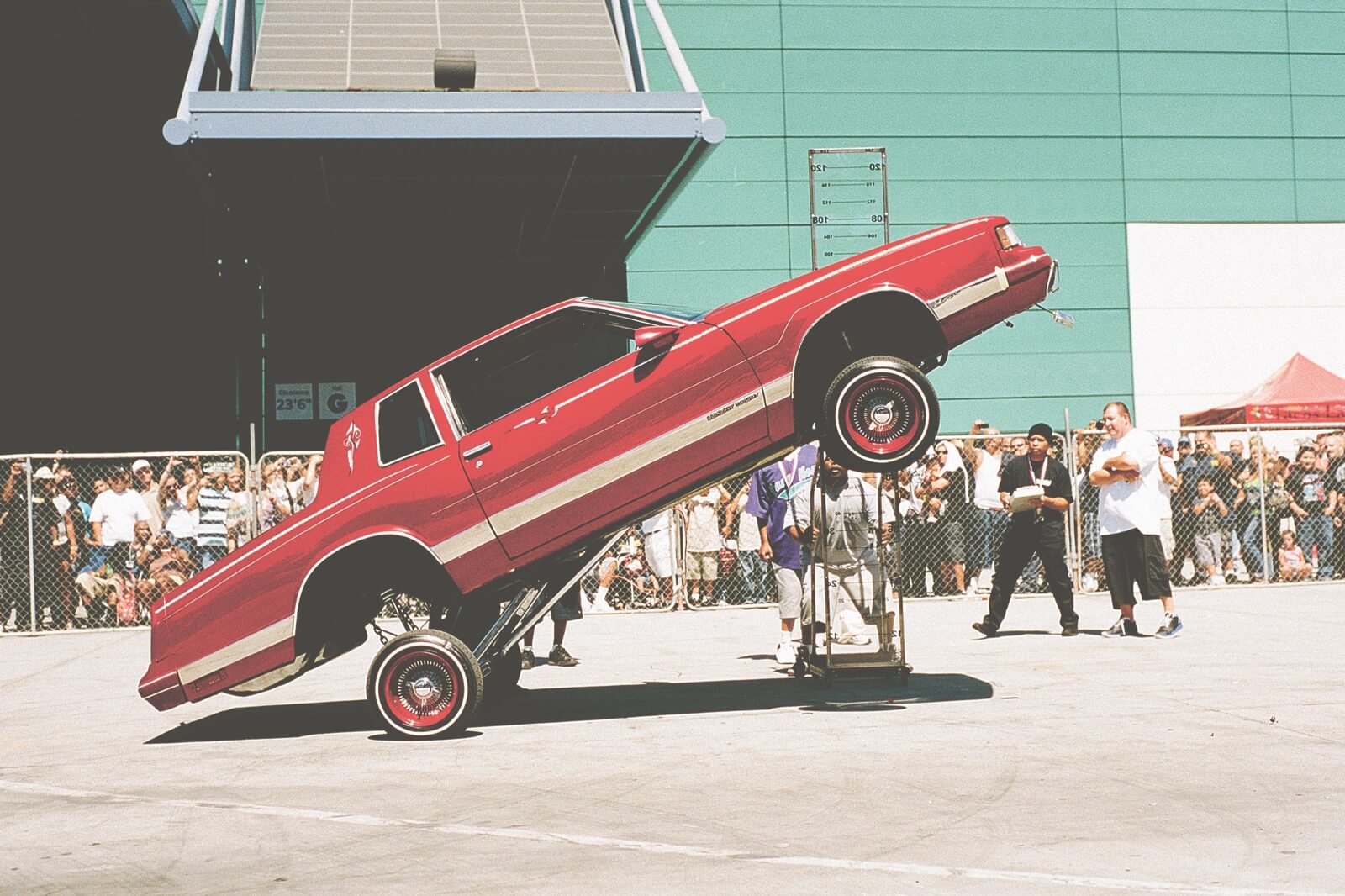
Lowrider Convention in Los Angeles
COURTESY: V&A / © 2019 Nathanael Turner
Meanwhile there are also films about different motor cultures across the globe – from the extraordinary spinners in South Africa, to classic car enthusiasts in the UK, via Japanese truck drivers – and the show concludes with a brief nod to the future. The Pop.Up Next is a prototype created by a combination of Italdesign, Audi and Airbus that has an electric engine, is driverless and would be available on-demand (rather than owned individually). Oh and it will also be able to fly.
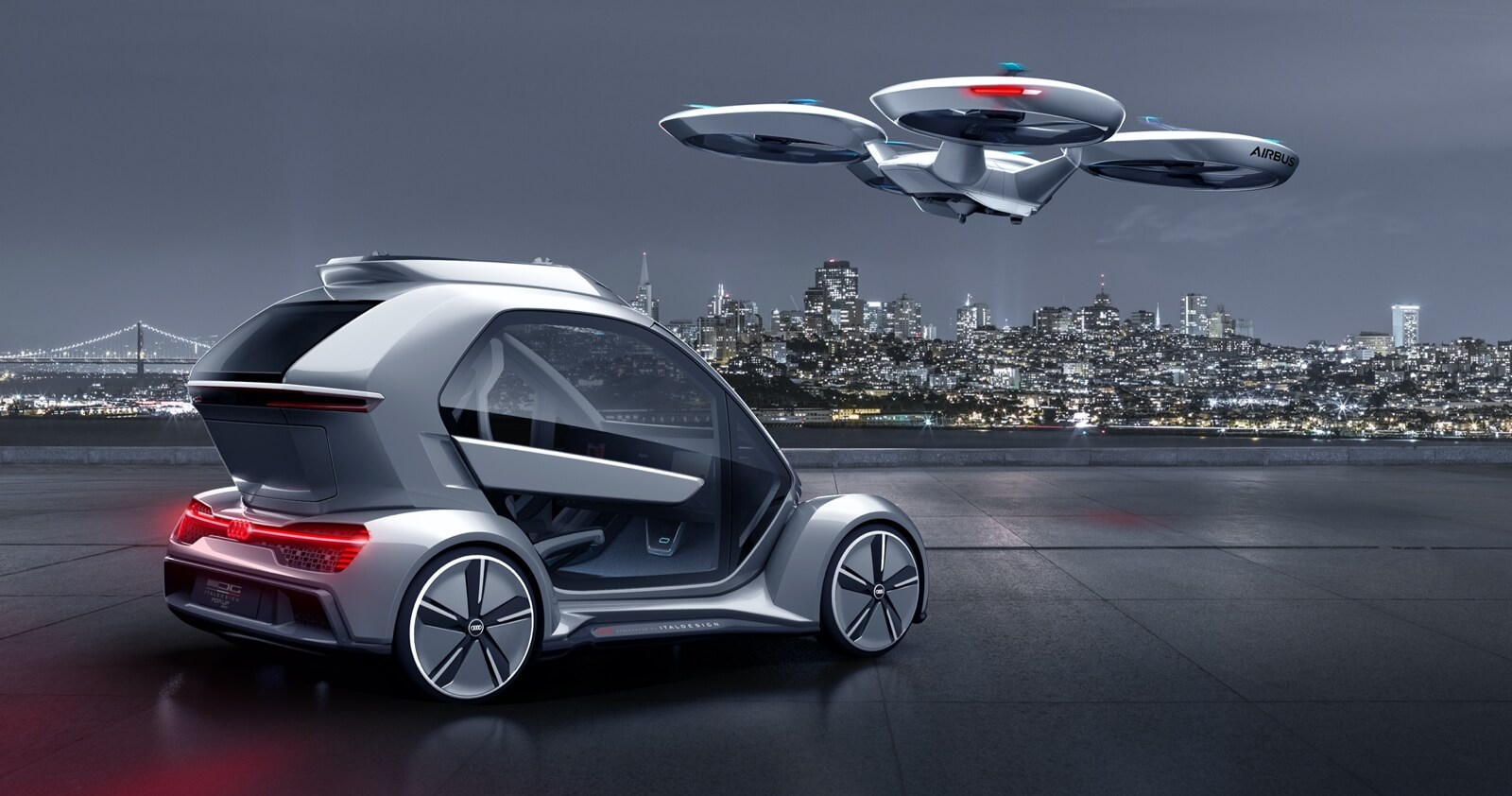
Pop.Up Next
COURTESY: V&A / © Italdesign
Ultimately Cars effectively, but also quite subtly, proves what a profound effect the combustion engine has had on twentieth century society for good and ill, providing a sense of optimism and freedom while also reeking havoc both with people’s lives and on the climate. My suspicion is that there’s enough here for both enthusiast and environmentalist alike, which is a really, really clever trick. I think it’s a wonderful exhibition.
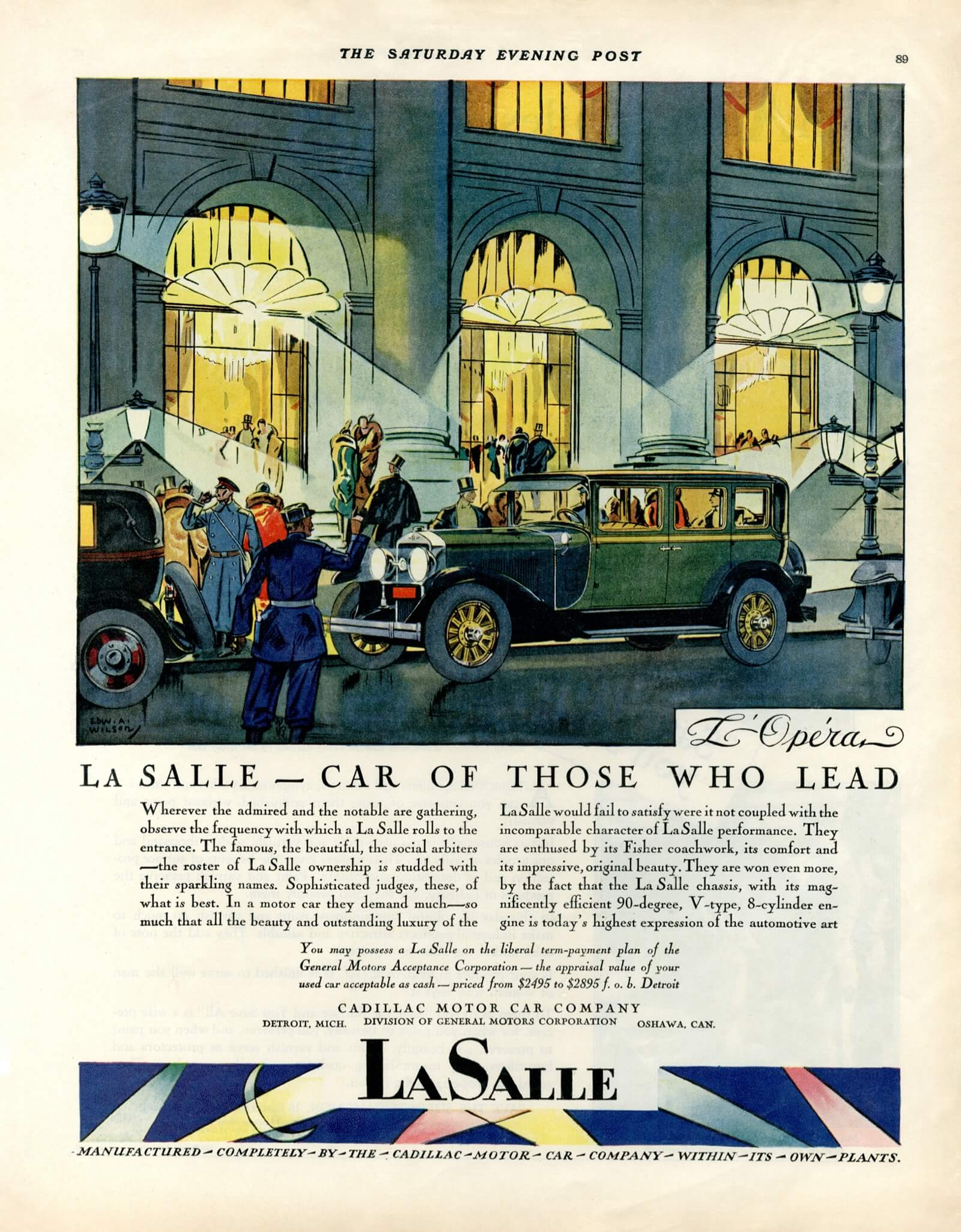
An advert for the GM LaSalle from a series showing the car in various European locations
COURTESY: V&A / Illustrated by Edward A. Wilson, circa 1927 / © Courtesy of General Motors Company, LLC
V&A – the world’s leading museum of art and design.





